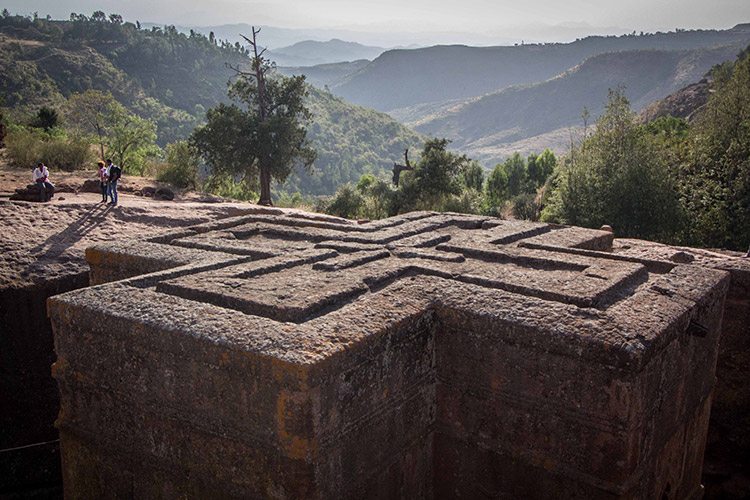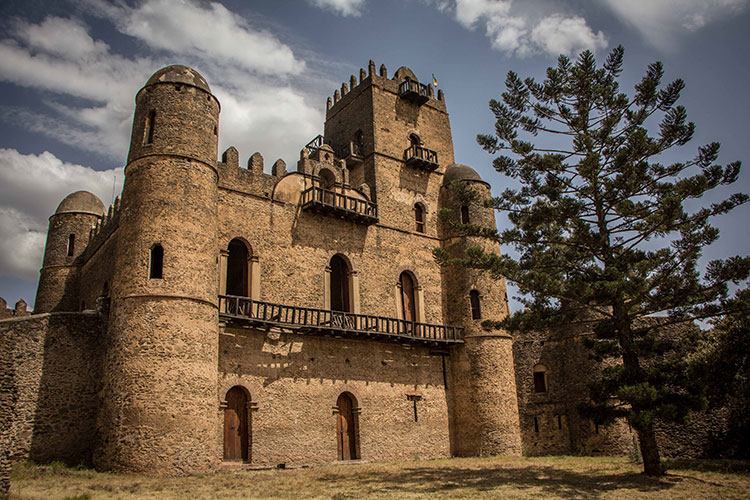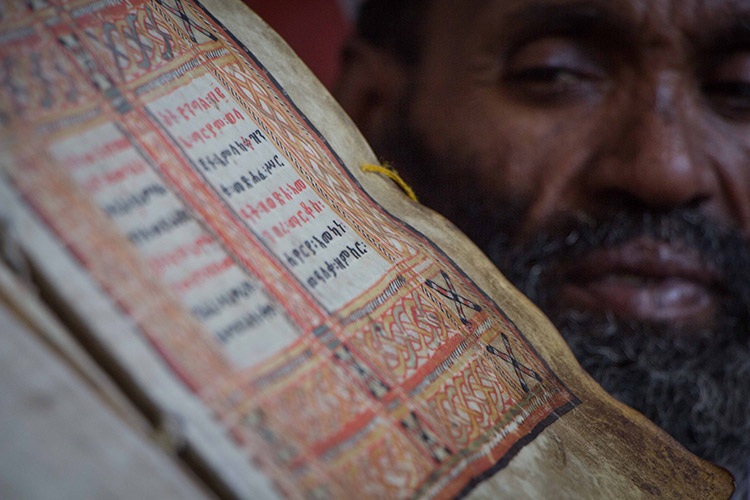Field Journal: Ethiopian Culture Tour 2016, Lalibela and Axum
Posted by Marco Tonoli
in Africa and Expeditions
It was as if we had traveled back in time through the ages of Ethiopia’s mystical history, a time of great empires, holy wars, grand castles and rock hewn churches in a land that stood defiant against the European colonization of Africa. The journey through Gondar, Lalibela and Axum is a walk through the great moments in Ethiopia’s history, littered with World Heritage sites. The grand Fortress City of Gondar took us to a period of Emperor Fasilidas, who after his father was forced to step down due to revolt against his decision to convert the state religion to Catholicism, assumed the throne and reverted the empire to Ethiopian Orthodox Christianity. One wanders through the vast castles, banquet halls and churches of 17th Century Ethiopia, a period also known for producing the classic Gondarian art, where bold colorful images of biblical scenes adorn the walls. The journey through time continued, to when the body of a young boy was covered by a swarm of bees, believed to be a sign from the angles that this young child would be the Emperor of Ethiopia. Emperor Lalibela was said to have seen the city of Jerusalem in his dreams, and so dedicated his life to recreating this vision of the Holy City. It is said the churches of Lalibela were constructed in 25 years, where angles helped carve elaborate structures out of living rock to produce what is possibly one of the most spectacular architectural sites achieved by man. Cutting down into the bedrock, churches were formed of immense structure and detail, including the largest of all monolithic churches, Bete Medhane Alem, surrounded by 34 individual pillars. The most impressive though is the Crucifix form of Bete Giyorgis, a free standing vision of ancient architectural beauty carved out of solid rock.
Our journey does not end there, we continue a further 700 years back in time to one of the world’s great Empires, the Axumites. A region in northern Ethiopia that has a historical connection to the queen of Sheba, her meeting with King Solomon and their conceiving of a son, Menelik I, who is famed for having brought the Ark of the Covenant to Ethiopia. The simple yet hugely important site of the Church of Our Lady Mary of Zion is believed to hold the Ark of the Covenant. The Axum Empire was the first nation to convert from Paganism and adopt Christianity as a state religion, and this belief is entrenched in Ethiopian Orthodox Christianity. It was in Axum that our journey into the history and belief of Ethiopia culminated, and where we began to understand the deep sense of faith held by Ethiopians. We were privileged on our final morning in the north to join in the monthly procession that draws in citizens from around Axum, all shrouded in white cloth, bearing candles and chanting in ancient Ge’ez. The perfect harmony that drums though your core instils a sense of understanding why a country that has for years struggled with poverty is able to hold itself together. We were thrown into the center of absolute commitment to belief as they surrounded the priests carrying the Tabot, a replica of the Ark of the Covenant, and marched in a procession through the dark streets of Axum in a religious ceremony that continues for over 5 hours of mass. praying for peace and prosperity.
An Ethiopian culture tour indeed. It is a land of ancient history and deep rooted beliefs in a spectacularly dramatic landscape. This is Ethiopia. One could at this point already return home feeling richly rewarded, yet we were all amazed to know that we were only half way through our journey … and the south was still ours to explore.
Visit our Ethiopia Expedition page for details on this: Ethiopian Culture Tour



